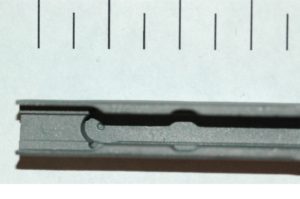Frequently Asked Questions
Is our part design a good candidate for RapidProtoCasting®?
RapidProtoCasting’s
process is good for producing small quantities of complex geometry parts in metals that may be difficult to machine or form. Designs with thin walls, large section changes, small radii, undercuts, negative draft and multiple complex features may be easier to produce using lost-wax investment casting than by traditional machining, EDM or forming. Component designs that may not benefit from RapidProtoCasting’s process include simple part geometries that can be easily machined, low-temperature metal alloy parts (aluminum, zinc, etc.) that can be cast by other means, parts where the complex geometry is primarily deep or small diameter holes and low-cost consumer goods.
 
What considerations are important when designing parts for manufacturing by lost-wax investment casting?
Extra Features:
Castings incorporating extra features that do not increase the part envelope can typically be produced using rapid prototype patterns for little additional cost. Datum targets, grooves, radii, fillets, bosses, recesses and grooves are easily produced and may improve inspection, the durability of the finished castings and assembly into the finished product. Where wax or plastic injection tooling is used to produce the patterns, designs with a single parting line or recesses/holes oriented along one or two axis will reduce the need for complex tooling and slides.
Gate Removal:
RapidProtoCasting pours metal into the part through a ‘gate’ connected to the surface of the finished casting. A design with one or more non-critical surface areas where this gate can be removed to +0.02/-0.01 will reduce the part cost.
Holes:
Parts with small diameter (<0.080″/2mm) holes, deep (>0.25″/10mm) holes or small internal threads (<3/8″/8mm) are best produced by casting the holes solid and secondary machining.

